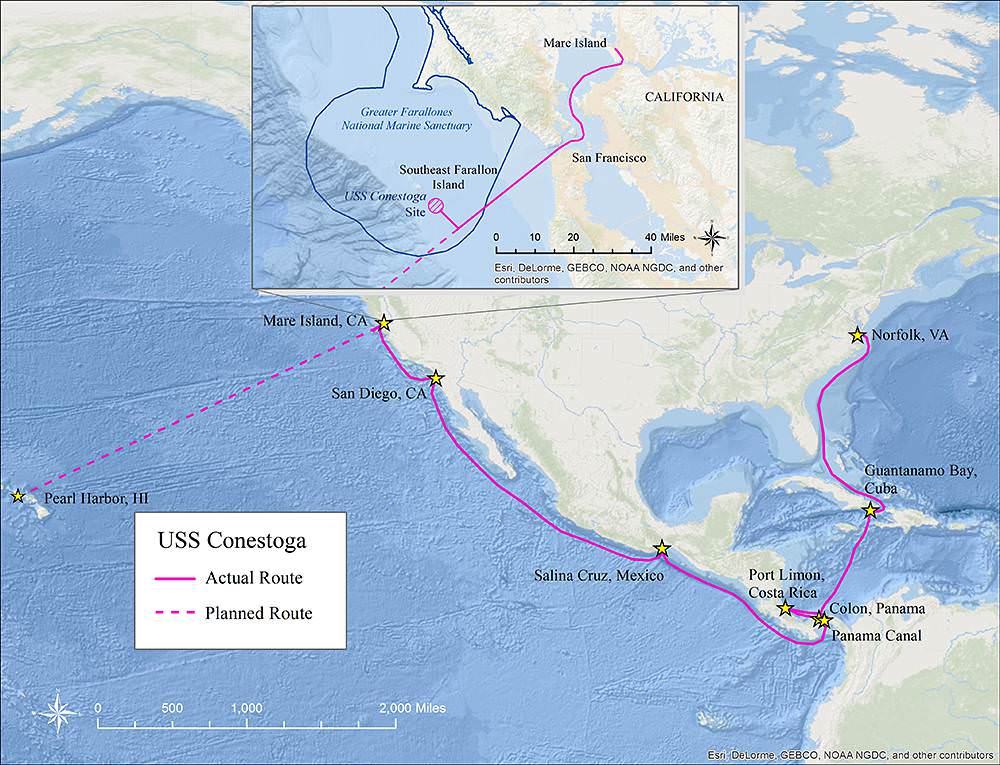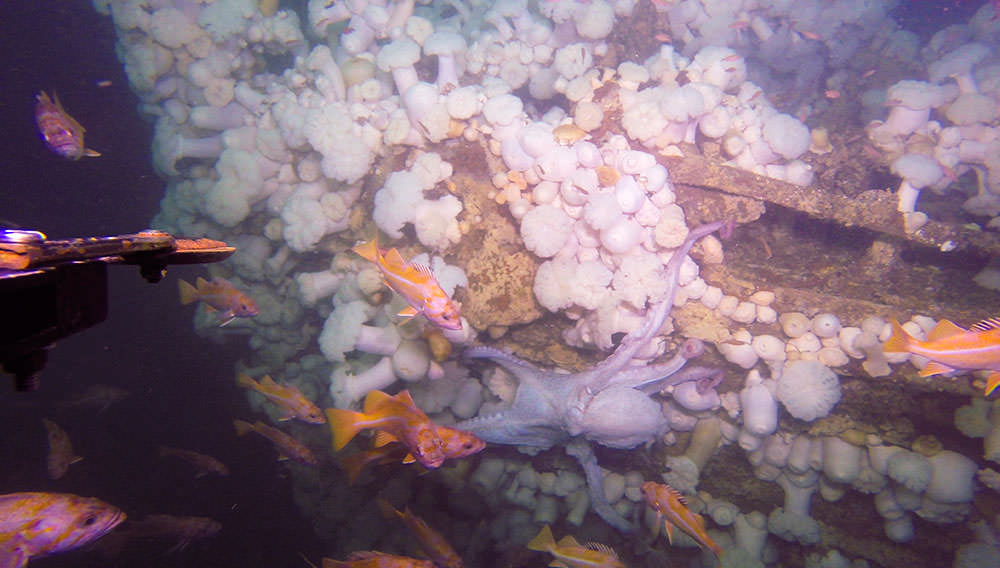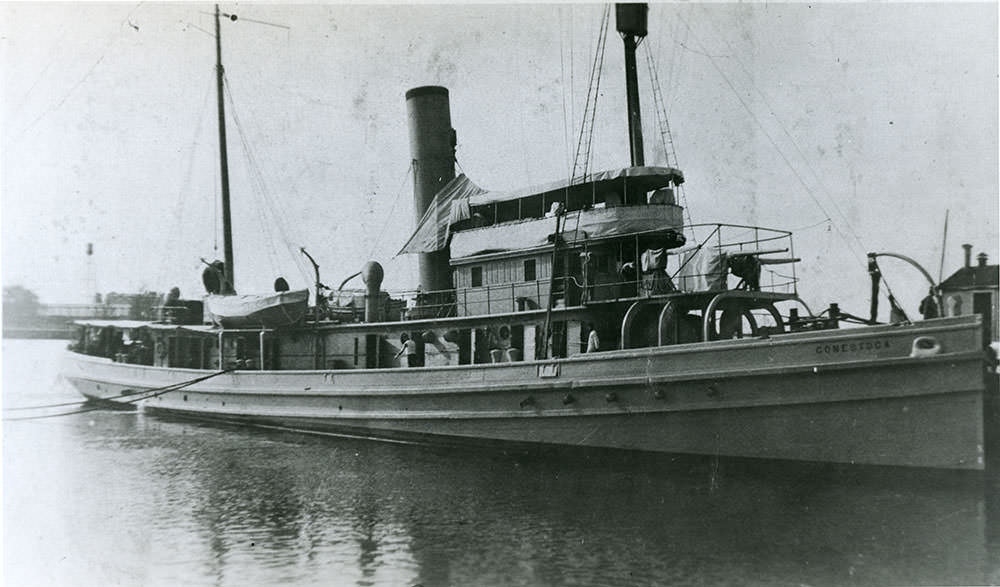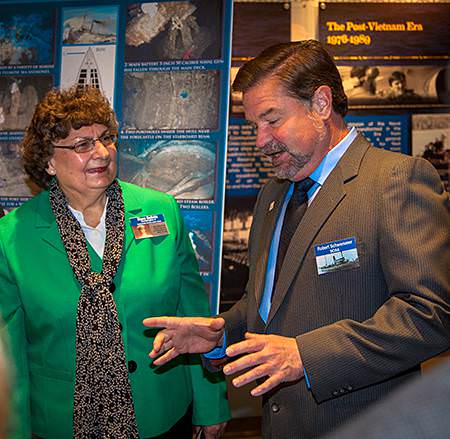The USS Conestoga: "A tangible reminder of who we are as a nation"
What does it take to solve a 95-year-old mystery? Robert Schwemmer knows the answer.
As the West Coast Regional Maritime Heritage Coordinator for NOAA's Office of National Marine Sanctuaries (ONMS), Schwemmer was the co-principal investigator with James Delgado, ONMS Maritime Heritage Coordinator, on the discovery of the USS Conestoga announced earlier this week. This U.S. Navy fleet tug sailed from San Francisco Bay on March 25, 1921 and vanished with 56 men on board.

Robert Schwemmer explains how the ONMS team finally solved this mystery, discovering the wreck and piecing together what happened.
When did you know for sure that the so-called "mystery target" from the 2009 NOAA survey was the USS Conestoga?

Following the September 2014 maritime heritage expedition, we conducted extensive research on reported tugboat losses in the region and didn't find any likely candidates. Our next step was to research tugboats reported missing, either entering or departing San Francisco, and there was a possible match for our 170-foot "mystery tugboat."
A systematic comparison of diagnostic features of the wreck to the original ship's plan suggested the mystery vessel could be the USS Conestoga. But it wasn't until after I spent hours reviewing underwater video footage of the wreck that the "smoking gun" literally appeared in the background – a 3-inch 50-caliber naval gun that was a perfect match to the gun photographed aboard the tug in San Diego months before its disappearance.
What was that eureka moment like for you?
In October 2015, we assembled a team that included experts from NOAA, U.S. Navy, Teledyne SeaBotix and volunteers armed with the latest research, technology and expertise. Once we had final confirmation the wreck was indeed Conestoga, I felt relieved as well as honored because we could write Conestoga's final chapter and hopefully bring some closure to the crewmembers' descendants. Before we left the site, we said a prayer for the brave crew and dropped some rose petals in the ocean in honor of their memory.
Did this discovery resonate with you on a personal level in any way?
Conestoga has been an amazing personal journey. No other shipwreck discovery I've been involved with compares to the responsibility that comes with telling the story of a group of men who gave the ultimate sacrifice in service to their country. This has touched me at a very deep, emotional level.
It's been 95 years since Conestoga vanished mysteriously. Why does this ship matter today?

Conestoga isn't just a ship. It is a tangible reminder of who we are as a nation. The crew of Conestoga represented diverse communities and cultures across America, united in a cause bigger than themselves. When Conestoga disappeared it tore a hole in the fabric of many families that has lasted generations.
Now that hole can start to be mended with the knowledge that the Conestoga has been found in a national marine sanctuary, where it will continue to be protected by law and will in turn provide sanctuary for marine creatures. The example of sacrifice and service by the men who died on Conestoga, performing their duties to the end, is as relevant today as it was 95 years ago.

Robert Schwemmer is the West Coast Regional Maritime Heritage Coordinator for NOAA's Office of National Marine Sanctuaries (ONMS). He coordinates and conducts archaeological surveys and research for the five national marine sanctuaries located along the Pacific West Coast. Schwemmer has worked with other NOAA scientists on projects in the Northwestern Hawaiian Islands, Arctic and Great Lakes, and assisted topside during the recovery of the gun turret from the civil war navy ship USS Monitor off Cape Hatteras, North Carolina. Schwemmer was co-principal investigator with James Delgado, ONMS Maritime Heritage Program director, on the discovery of the USS Conestoga announced earlier this week.

